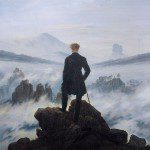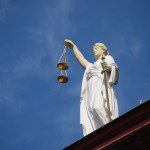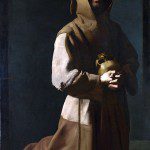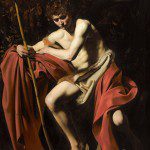It was a long ride home. Four hours to be exact and this time I was the passenger. It was an icy mid-December, college finals were over, and Christmas break had begun. As the frigid Minnesota farmlands rolled by, I eagerly anticipated family time, sleeping in, and intellectual endeavors that had nothing to do with biology or organic chemistry. Reaching into my overstuffed bag of books, magazines, and articles, I pulled out Time Magazine’s annual “coronation issue”: The Man (or Person) of the Year. At this time, a spark of idealism about the news media still glowed within me. Surely the person awarded this title was worthy of it. After all, Time Magazine is TIME MAGAZINE – an enduring institution of news journalism. Decades in print, boasting a global platform, and granting an annual trophy recognized internationally as a consequential “statement”, Time Magazine was no shrinking enterprise. The Man of the Year issue was (in my mind) perceived as the pinnacle award granted by the elite media.
The Man of the Year in 1994 was Pope John Paul II. I winced a little. Now, let me be clear, I had nothing personal against John Paul II. He was the only Pope of whom I had ever been conscious. The Polish Karol Wojtyla became Pope in 1978, when I was only five years old. Over sixteen years, his presence seemed ubiquitous. I remember a youthful, smiling man garbed in white and surrounded by swarms of fans and faithful, the jarring footage of the same man being shot in St. Peter’s Square, the lovably ridiculous “Popemobile”, the Polish national warmly kissing the ground upon the return to his native land, the warm yet robust moral diplomat standing beside President Reagan or Prime Minister Thatcher, and, of course, the earnest pictures of a Catholic Shepherd deep in prayer. Yes, I considered myself familiar with this man. Or was I? While John Paul II seemed likable enough, I admit as a Protestant with some latent anti-Catholic biases that the moral and political stature afforded the Papacy rankled me a little. Indeed, the Pope was a servant of the same Christian God that I worshipped, but didn’t his exalted role betray an elitist pomp and hierarchical rigidity that drove a wedge between man and God? In spite of chafing a bit under Time Magazine’s choice, I had a long car ride ahead of me. And so I would begin reading.

To my surprise, the story of Pope John Paul II was quite stirring. Far from my expectation of a faithful and charismatic Catholic steadily rising in the priestly ranks to ultimately achieve the role of the Supreme Pontiff, the story of Karol Wojtyla was deeply moving. Born and raised in interwar Poland, the young Wojtyla would thrive in academics, athletics, and drama. His idyllic life, however, would change abruptly with the Nazi invasion and ravaging occupation of Poland in World War II. During the war, he would work as a laborer in different venues, grieve the death of his father, and follow his discovered calling to become a Roman Catholic priest through an extremely dangerous clandestine seminary.
After the war, Wojtyla would successfully pursue further graduate level education, serve as a parish priest, and teach under the stern and suspicious eyes of Poland’s new Communist overseers. Elevated from priest to bishop, and from bishop to cardinal
Karol Wojtyla would also make important contributions to the Second Vatican Council – one of the transformative Councils in the modern Catholic Church. In 1978, he would be elected Pope.
Karol Wojtyla would have an extraordinary life as a man. How would he perform as Pope John Paul II? Time Magazine aptly described him as consequential. Ensconced amidst the priceless treasures and artistry of the Vatican, the Pope quartered himself in quite austere living space – working and living in a barren room lacking the expected papal accoutrements. He was at once a mystic and an intellectual. Deeply entranced in earnest prayer, John Paul II would offer up to Christ countless individual prayers brought to him from his billion-strong flock. Then, at dinner, he would genially host and moderate lively exchanges of ideas and opinions with fellow friends, priests, and theologians. An aide would say,
“He listens, talks directly, asks questions, puts you at ease. After five minutes you forget you are talking to the Pope.”
Never forgetting his origins, the Pope would faithfully maintain childhood friendships and intimately follow the local concerns of his beloved Poland. At the same time knowing his current responsibilities, he would cultivate relationships with innumerable national powers and ardently advocate for the God-given gifts of life and human dignity so often disregarded in the cold world of Realpolitik.
Capitalizing on late nights and early mornings, presiding over masses and penning encyclicals, the man who was Pope seemed tireless. John Paul II would be regarded (even in 1994) as one of the most prolific and widely traveled Popes in world history. His standard was high and forever set before him. Perhaps it is apropos that, whenever writing, the Pope would prayerfully pen at the top of each sheet of paper “Ad Majorem Dei Gloriam” (To the Greater Glory of God) and “Tuus Totus” (All Thine).
The Pope, however, would be a stickler for the Truth. He never failed to be kind, yet firm. One would find him scolding the dehumanization of the people under collectivist Communist oppression, but simultaneously critical of the materialistic decadence of the West. Even among his Catholic flock, his determination to provide correction to those deviating from Church doctrine generated no small amount of friction with those receiving it. In spite of periodic controversy, he expressed confidence in his duty to shepherd the wayward saying,
“It is a mistake to apply American democratic procedures to the faith and the truth. You cannot take a vote on the truth. You must not confuse the [sense of the faith] with ‘consensus’.”
Whether Pope John Paul II was providing the doctrinal edifice for the New Evangelization or managing an unwieldy bureaucracy, whether drawing an ever-growing following of Catholics with his blend of prayer and charisma, or overseeing the financial solvency of the Church, he never seemed to lose track of who he was or what he was called to do. He was the Servant of the Servants of God, the Vicar of Christ, the Successor of Peter the Prince of the Apostles. But beyond his titles, he was a man, like Peter, with his own sin and shortcomings. And John Paul II (and Karol Wojtyla) was most himself when in deep prayer to Jesus Christ – whether prostrate on the ground of his private chapel, or inaudibly reciting the Rosary on the rooftop terrace. Asking for mercy, praying for guidance, and finding solace and sustenance in the company of God – this was Pope John Paul II. Humbly, I realized that I had, indeed, never met him before..
It is now eighteen years (to the day, nearly) since I first read Time Magazine’s Man of the Year article. Pope John Paul II has passed into the arms of God, and Pope Benedict XVI has assumed the papal mantle. And as for me? I am now Catholic. No, I am pleased to say, Time Magazine did not convert me to Catholicism. But it did provide me with one among hundreds of other epiphanies that led me to the Catholic Church. After years of considering the papacy as little more than a ceremonial figurehead steeped in garish pomp and circumstance, I now look at it with new eyes. The pope represents a visible figure on the world stage who speaks openly of Christ, encourages the abiding practice of prayer, delves deeply into the rich mystical and intellectual tradition of faith in a world that holds faith in disdain and contempt. I know the misgivings surrounding the papacy because I shared them. But I found, to paraphrase G.K. Chesterton, that understanding the papacy wasn’t something I had honestly tried and found wanting, but instead had found difficult and left untried. The role of papacy makes sense for reasons simply and complex. The person of the Pope matters. With additional years of prayer and study, I now see things differently than I once did. Quite differently.
And so now I smile when I think back on “The Man of the Year”. I no longer wince. Now, I look back and reflect. And in some ways, I realize that the winter’s ride where I read about the Pope was the beginning of a long ride home. Indeed, it was. A long ride home…in more ways than I could ever have known.











